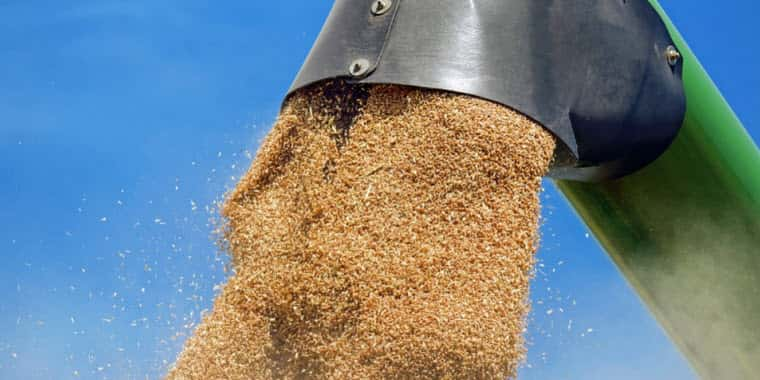Agriculture Secretary Tom Vilsack floated the idea of Congress using the Commodity Credit Corp. (CCC) fund in some “innovative and creative ways” to deal with the “pretty pricey” issue of trying to raise reference prices in the next farm bill.
Vilsack spoke to reporters Thursday following a speech at the Iowa Renewable Fuels Summit.
Asked if he has had recent discussions with House or Senate Agriculture Committee members about how fast they might be moving on a farm bill, the secretary said both committee chairs “are anxious to get something done” and find a pathway to passing a bipartisan bill.
Vilsack then said, “it’s not rocket science,” and explained the crux of the problem is trying to find money either in or out of the constraints of the farm bill to raise reference prices.
“There’s a discussion about reference prices and depending on how far you extending them and how many commodities you embrace with those reference prices, it can be a pretty pricey item,” Vilsack said.
Raising reference prices is a big-ticket item. Agricultural economists last year said a 10% raise in reference prices — the baseline for the commodity safety net — would cost $20 billion over ten years. A 20% bump could cost around $50 billion over a decade.
The committees either have to find money within the farm bill “or they have to figure out a creative way to go outside” the bill, Vilsack said.
Democrats oppose the two most frequently discussed ways to find money for reference prices: adjusting the Supplemental Nutrition Assistance Program (SNAP), or “basically raiding” the conservation dollars provided in the Inflation Reduction Act, Vilsack said.
A deal was already struck on the terms of SNAP with a change to work requirements in the budget agreement reached between President Joe Biden and Republican leaders last summer, Vilsack said. “So our view is that conversation is over.”
When it comes to roughly $18 billion left in conservation funds from the IRA, Vilsack said those dollars “are in great demand.” When USDA opened up $850 million through the Natural Resources Conservation Service, there were more than $2 billion in requests. USDA has staffed up to help meet “a significant amount of that demand,” he said.
“So, you can’t take money that’s available to all farmers and give it to a subset of farmers,” Vilsack said. “That’s the problem.”
Congress either has to get more creative or “scale down” the opportunity to raise reference prices, or it becomes difficult to pass a farm bill.
Another option, Vilsack said, is his suggestion to use the Commodity Credit Corporation, a $30 billion fund provided to the Agriculture secretary each year to use to support commodity markets. The CCC dollars already fund the Agricultural Risk Program and Price Loss Coverage (ARC and PLC) programs as well as the Conservation Reserve Program (CRP). “Every year, we leave money on the table there. So that is available, and if they are innovative and creative enough, and we’re happy to work with them, we can get to a point where they can do what they need to do to help farmers who are dealing with a much different climate and terrain because of climate.”
Vilsack talked about a trip Jan. 8-9 in Maine and New Hampshire where he said farmers are facing “just unbelievable weather conditions” with repeated floods, early freezes and late freezes that devastate their abilities to produce crops.
“You talk to those Maine farmers and they say, ‘Hey, something’s changing and the programs that you have are great, but we have to figure how to do this a little differently because we can’t get it fixed before it gets destroyed again,'” Vilsack said. “So, I think there are some challenges and that’s why we have to be creative and innovative to get to ‘yes.'”
House Agriculture Committee Chairman Glenn “GT” Thompson, R-Pa., has said he thinks he can begin to move ahead on a farm bill in March, Vilsack noted. One challenge still facing lawmakers in drafting a farm bill is that Congress still has not passed the fiscal year 2024 appropriations for USDA. That’s one of the bills tied to the Jan. 19 need for a funding bill either for the rest of the fiscal year or another short-term extension.
The option of using CCC dollars to boost reference prices also likely requires continuing to give Vilsack flexibility to use the funds. The House GOP appropriations bill includes a rider that would hamstring the secretary from using CCC dollars after Republicans became angry with Vilsack for using $3.1 billion to create the Partnership for Climate-Smart Commodities projects.
###
DTN


